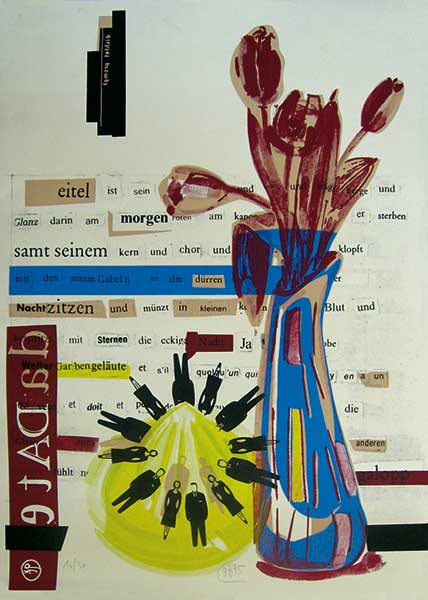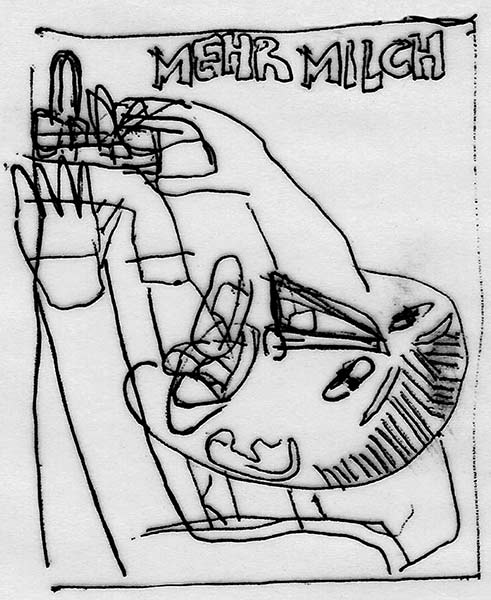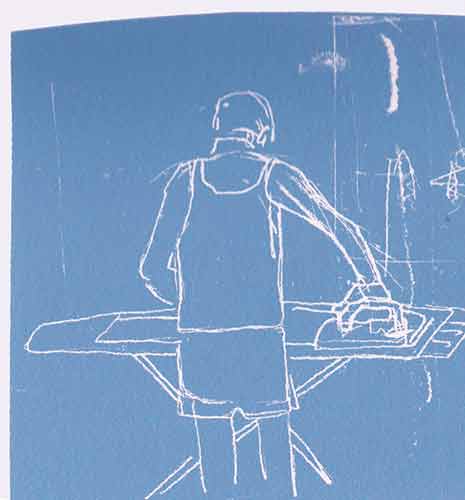Screen printing is a transfer technique. The heartpiece is a synthetic mesh stretched over a frame. The screen serves as a stencil as it is divided up into permeable and impermeable sections by way of manual intervention or photomechanical processing. When the screen is placed on the substrate, the ink will penetrate the permeable sections only. Our Graphik Werkstatt uses manually produced screens exclusively. For us, screen printing is a concomitant technique in printmaking.
Ink is spread over the entire screen area with a plastic squeegee, at the same time, the mesh is pressed onto the substrate which absorbs the ink in the permeable spots. Screens (stencils) can be produced manually and photomechanically. In manually produced stencils, the spots in the mesh to be left uninked are covered with a blocking layer (glue, varnish, emulsion, film) and thus made impermeable.
Photo stencils require a light-sensitive emulsion which hardens as it reacts to light. The sections in the emulsion which were not exposed to light as they were covered by a screened diapositive can be removed when rinsed with water and will then form the sections to be printed on the substrate.
 |
 |
 |